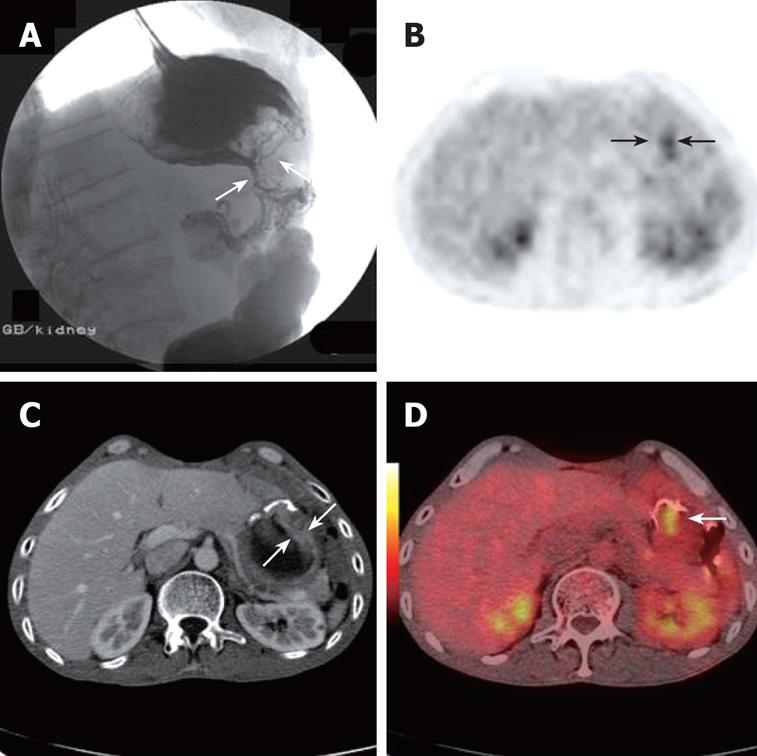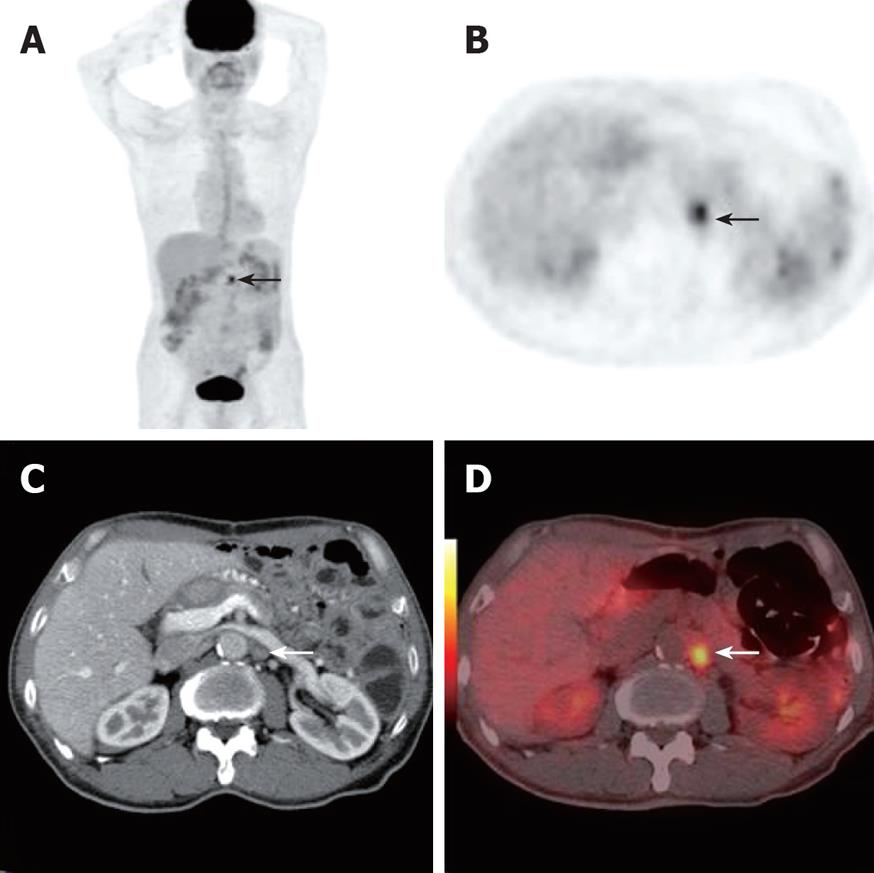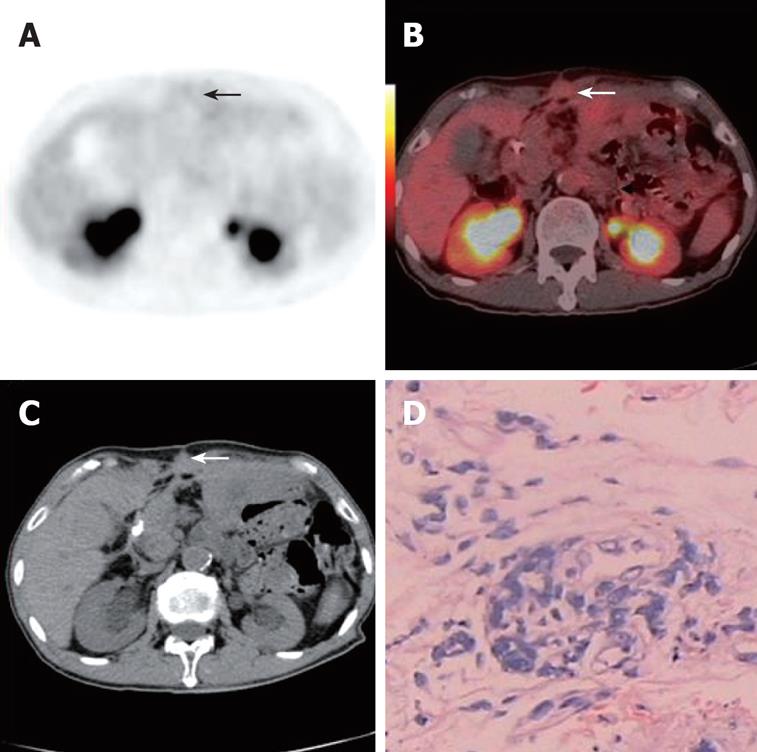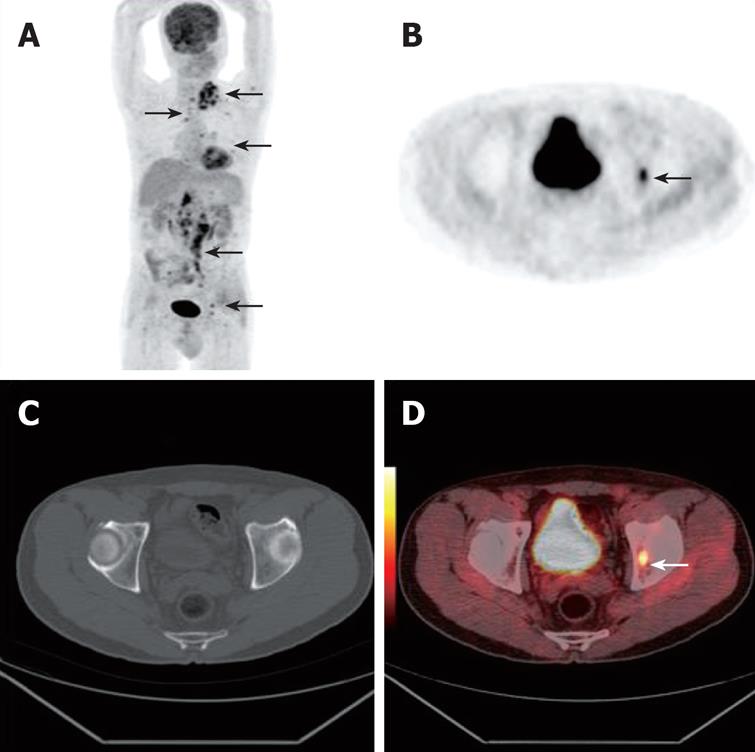Copyright
©2008 The WJG Press and Baishidengs.
World J Gastroenterol. Aug 7, 2008; 14(29): 4627-4632
Published online Aug 7, 2008. doi: 10.3748/wjg.14.4627
Published online Aug 7, 2008. doi: 10.3748/wjg.14.4627
Figure 1 A 56-year-men who had had gastric cancer resection 3 years previously underwent PET/CT because of suspected disease recurrence upon barium swallow examination (white arrows, A), Axial contrast CT demonstrated local thickened stomach wall at anastomosis (white arrows, C).
Axial PET (black arrows, B) and PET/CT fusion images (white arrow, D) showed focal hypermetabolic activity in the remnant stomach, which was later verified as malignant by histopathology.
Figure 2 A 75-year-old asymptomatic man who had gastric cancer resection 1 year previously underwent PET/CT as part of routine post-operative surveillance.
Whole body PET projection image and axial PET image showed focal hypermetabolic activity in the abdomen (black arrow, A and B). Axial contrast CT detected a small lymph node at the same position (white arrow, C). PET/CT fusion images showed a focus of highly metabolic metastasis in retroperitoneal lymph node (white arrow, D).This was later verified by follow up. The case illustrated the value of early discovery by PET/CT in asymptomatic patients after surgery.
Figure 3 A 71-year-old asymptomatic man underwent PET/CT as part of routine post-operative surveillance after gastric cancer resection was performed 2.
5 years previously. Axial PET and PET/CT fusion images (arrows, A and B) showed no focal hypermetabolic activity in the abdominal wall. Axial contrast CT (white arrow, C) demonstrated local thickness in the abdominal wall. This was later verified as malignant by histopathological assessment of a CT guided core tissue biopsy (D).
Figure 4 A 67-year-old man underwent PET/CT due to clinically suspected disease recurrence in supraclavicular lymph nodes after his gastric cancer resection which was performed 2 mo previously.
Whole body PET projection image showed retroperitoneal and supraclavicular metastatic lymph nodes and bone metastasis. (arrows, A, B and D). Axial CT failed to reveal early bone metastasis (C).
- Citation: Sun L, Su XH, Guan YS, Pan WM, Luo ZM, Wei JH, Wu H. Clinical role of 18F-fluorodeoxyglucose positron emission tomography/computed tomography in post-operative follow up of gastric cancer: Initial results. World J Gastroenterol 2008; 14(29): 4627-4632
- URL: https://www.wjgnet.com/1007-9327/full/v14/i29/4627.htm
- DOI: https://dx.doi.org/10.3748/wjg.14.4627












